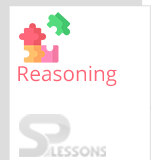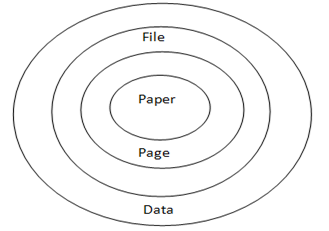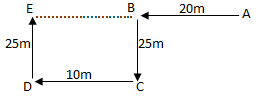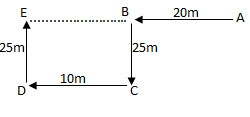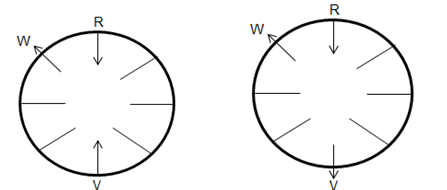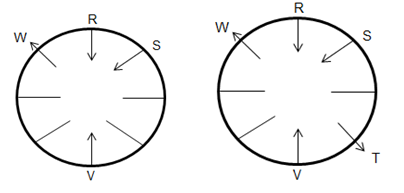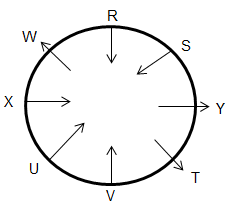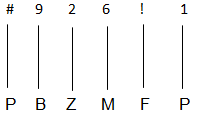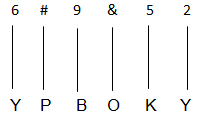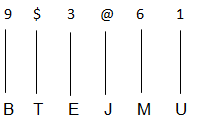 Introduction
Introduction
Reasoning is an important section in the employment related competitive exams in India. In particular, exams like IBPS, SBI and other bank related employment exams have Reasoning questions along with Quantitative Aptitude. The Reasoning section primarily has questions related to the Syllogism, Directions, and Inequality , etc. This article presents IBPS Clerk Prelims Reasoning Practice Sets for acing the IBPS Clerk Prelims Examination.
 Reasoning
Reasoning
Syllogism:
Directions for Questions (1 – 3): In each question below are three statements followed by two conclusions numbered I and II. You have to take the given statements to be true even if they seem to be at variance from commonly facts and then decide which of the given conclusions logically follows from the given statements.
1. Statements -
Some cycles are bikes.
All bikes are auto.
All auto are cars.
Conclusions -
I - Some cars are cycles.
II - All bikes are cars.
-
A. If only conclusion I follows.
B. If only conclusion II follows.
C. If either conclusion I or II follows.
D. If neither conclusion I nor II follows.
E. If both conclusions I and II follows.
-
A. If only conclusion I follows.
B. If only conclusion II follows.
C. If either conclusion I or II follows.
D. If neither conclusion I nor II follows.
E. If both conclusions I and II follows.
-
A. If only conclusion I follows.
B. If only conclusion II follows.
C. If either conclusion I or II follows.
D. If neither conclusion I nor II follows.
E. If both conclusions I and II follows.
-
A. North
B. North-East
C. South
D. West
E. East
-
A. 15m
B. 20m
C. 30m
D. 25m
E. 18m
-
A. If only conclusion I follows.
B. If only conclusion II follows.
C. If either conclusion I or II follows.
D. If neither conclusion I nor II follows.
E. If both conclusions I and II follows.
-
A. If only conclusion I follows.
B. If only conclusion II follows.
C. If either conclusion I or II follows.
D. If neither conclusion I nor II follows.
E. If both conclusions I and II follows.
-
A. If only conclusion I follows.
B. If only conclusion II follows.
C. If either conclusion I or II follows.
D. If neither conclusion I nor II follows.
E. If both conclusions I and II follows.
-
A. If only conclusion I follows.
B. If only conclusion II follows.
C. If either conclusion I or II follows.
D. If neither conclusion I nor II follows.
E. If both conclusions I and II follows.
-
A. If only conclusion I follows.
B. If only conclusion II follows.
C. If either conclusion I or II follows.
D. If neither conclusion I nor II follows.
E. If both conclusions I and II follows.
Circular Arrangement:
Directions for Questions (1 – 5): Study the following information carefully and answer the question given below:
Eight persons R, S, T, U, V, W, X and Y are sitting round a circular table. Five of them are facing at the centre while three of them are facing outside. Y is not facing at the centre. R is facing at the centre and is fourth to the right of V, who is third to the left of W, who is facing outside. U is an immediate right of X, who is facing at the centre. R is an immediate right of S, who is second to the left of T, who is facing outside.
1. Who is fifth to the right of U?
-
A. W
B. R
C. S
D. Y
E. None of these
-
A. X
B. R
C. W
D. U
E. None of these
-
A. W
B. U
C. T
D. S
E. None of these
-
A. Second to the left
B. Fifth to the right
C. Fourth to the right
D. Fifth to the left
E. None of these
-
A. One
B. Two
C. Three
D. Five
E. None of these
-
A. G
B. J
C. D
D. F
E. H
-
A. G is second to the right of I.
B. H is an immediate right of I.
C. D is an immediate left of I.
D. K is second to the left of I.
E. J is third to the right of I.
-
A. One
B. Two
C. Three
D. Four
E. None of these
-
A. G
B. F
C. D
D. E
E. None of these
-
A. K
B. J
C. I
D. G
E. None of these
Ranking:
1. How many such pairs of letters are there in the word 'POLICE' each of which has as many letters between them in the word (in both forward and backward direction) as they have between them in English alphabetical series:
Conditions:
(1) If the first, as well as last elements in the group, are even digits, then both are coded as Y.
(2) If the first element is an even digit and the last element is an odd digit, then codes for the first and the last elements are to be interchanged.
(3) If the first element is a symbol and the last element is an odd digit, then both are to be coded by the code of the symbol.
2. “#926!1”
R likes Chemistry.
7. V likes which of the following subject?
V likes English.
8. Which of the following group of friends study in standard IV?
T, U and V studies in standard IV.
9. Which of the following combinations of Friend, Standard and Subject is correct?
T studies in standard IV and he likes Hindi.
10. U likes which of the following subject?
U likes Math.
-
A. 1
B. 2
C. 3
D. 4
E. None of these
| Digit / Symbol | Letter |
|---|---|
| 7 | A |
| 2 | Z |
| 3 | E |
| # | P |
| @ | J |
| 5 | K |
| 4 | U |
| 6 | M |
| ! | F |
| & | O |
| 9 | B |
| 1 | I |
| $ | T |
-
A. PBZMFP
B. PBZMFU
C. PZBMFU
D. PZBMFP
E. PBZFMP
-
A. AUJTZZ
B. AJUTZZ
C. AUJZTZ
D. AJUZTZ
E. AUJZZT
-
A. YBPKOY
B. YBPOKY
C. YPBOKY
D. MPBOKY
E. MPBOKZ
-
A. BTJEMU
B. BTEJMU
C. BTEJUM
D. BTJEUM
E. BTJEUY
-
A. Math
B. Chemistry
C. Physics
D. Hindi
E. None of these
| Friend | Standard | Subject |
|---|---|---|
| P | II | Biology |
| Q | II | Physics |
| R | III | Chemistry |
| S | III | Art |
| T | IV | Hindi |
| U | IV | Math |
| V | IV | English |
-
A. English
B. Chemistry
C. Physics
D. Hindi
E. None of these
| Friend | Standard | Subject |
|---|---|---|
| P | II | Biology |
| Q | II | Physics |
| R | III | Chemistry |
| S | III | Art |
| T | IV | Hindi |
| U | IV | Math |
| V | IV | English |
-
A. T U P
B. P U V
C. T U V
D. R S T
E. S T Q
| Friend | Standard | Subject |
|---|---|---|
| P | II | Biology |
| Q | II | Physics |
| R | III | Chemistry |
| S | III | Art |
| T | IV | Hindi |
| U | IV | Math |
| V | IV | English |
-
A. Q - II – Chemistry
B. T - III – Hindi
C. V - IV – Math
D. T – IV – Hindi
E. None of these
| Friend | Standard | Subject |
|---|---|---|
| P | II | Biology |
| Q | II | Physics |
| R | III | Chemistry |
| S | III | Art |
| T | IV | Hindi |
| U | IV | Math |
| V | IV | English |
-
A. Math
B. English
C. Hindi
D. Chemistry
E. None of these
| Friend | Standard | Subject |
|---|---|---|
| P | II | Biology |
| Q | II | Physics |
| R | III | Chemistry |
| S | III | Art |
| T | IV | Hindi |
| U | IV | Math |
| V | IV | English |
